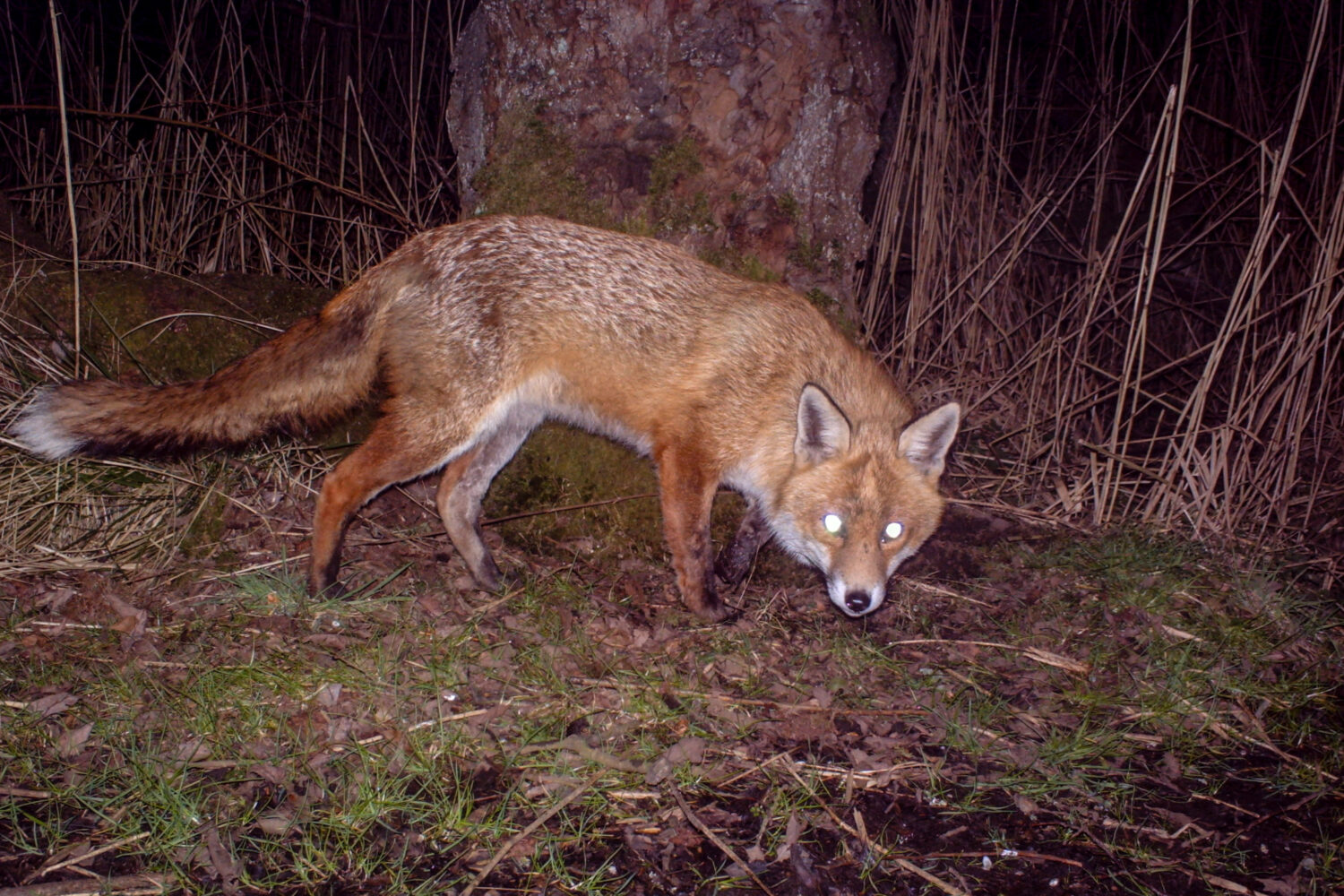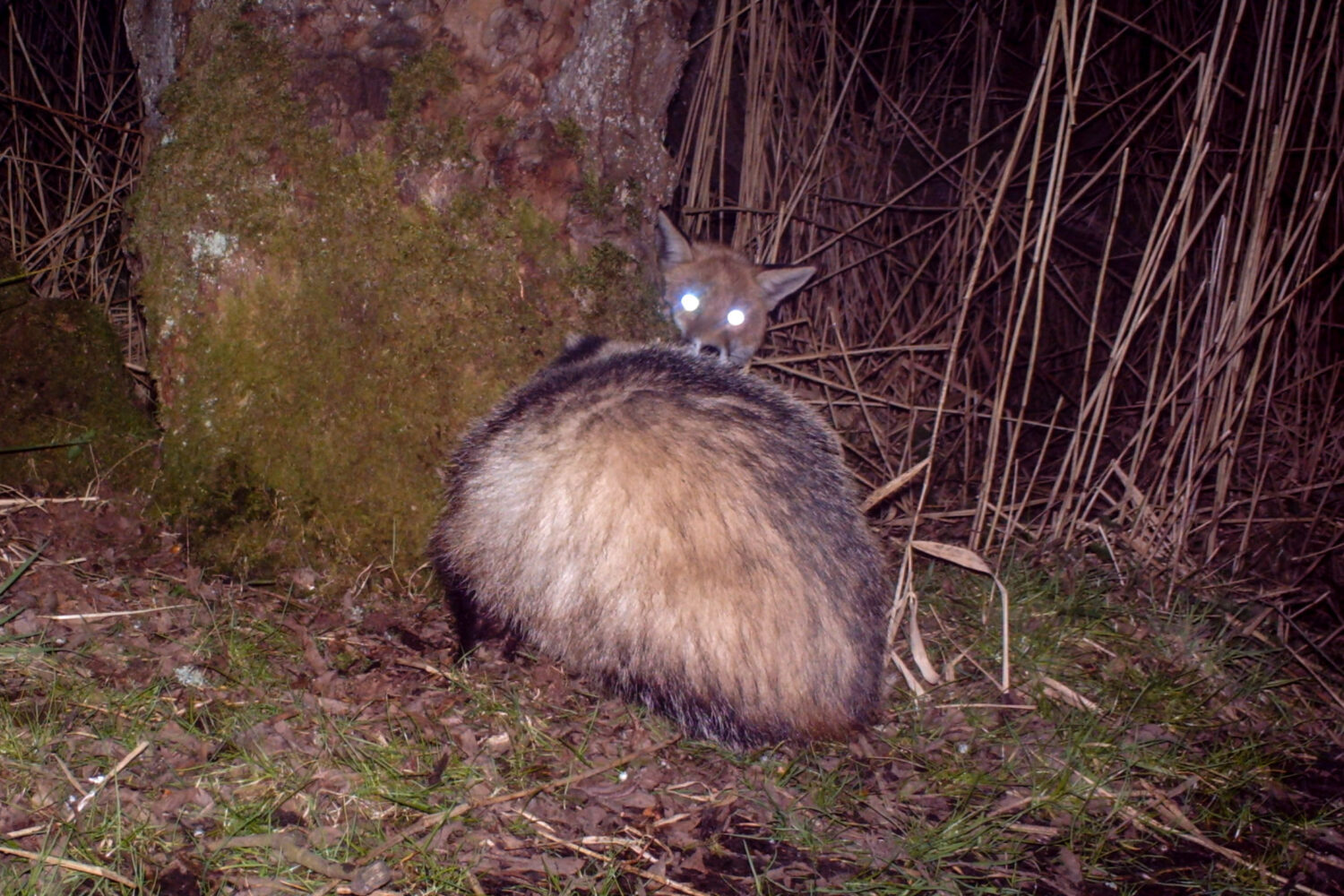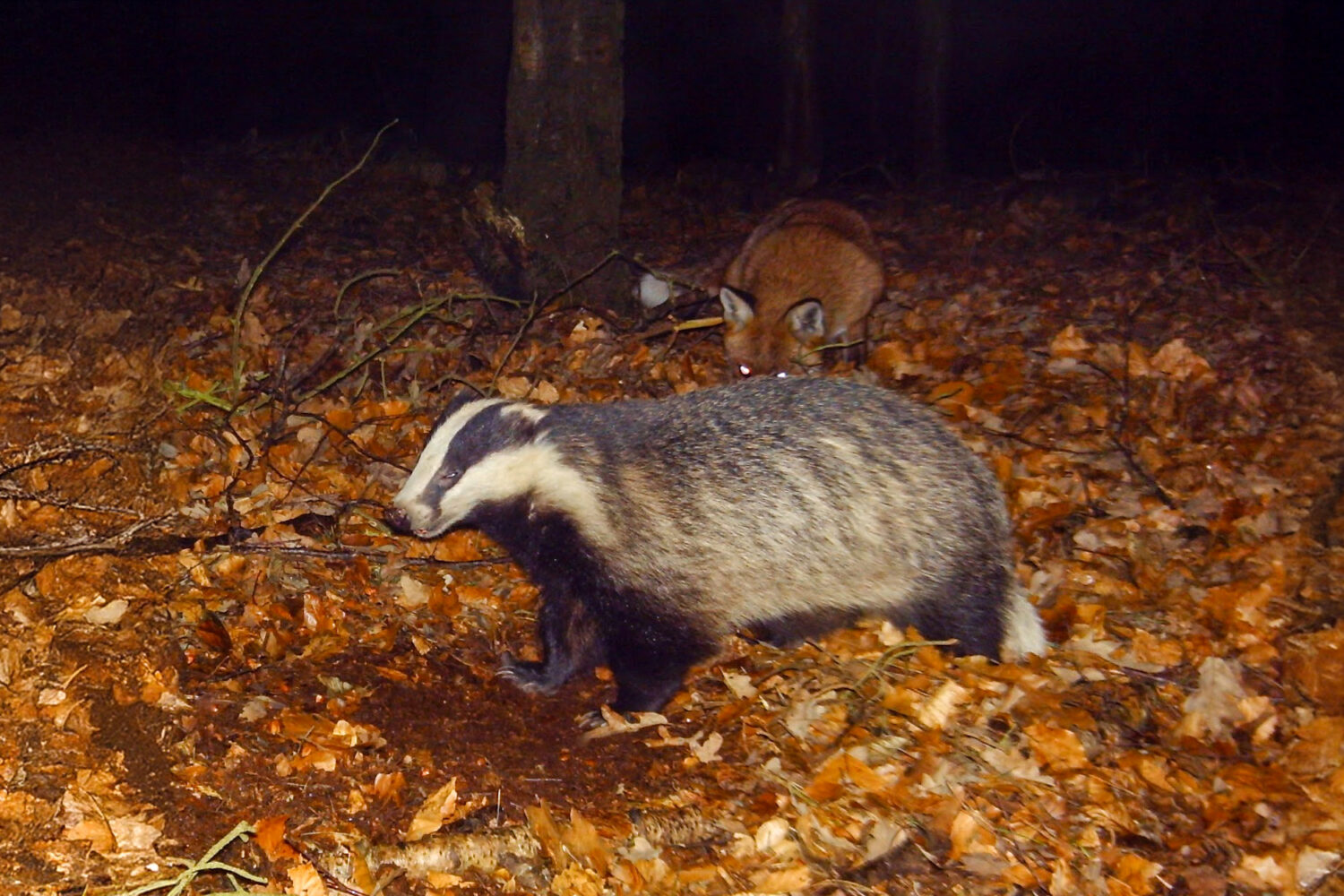Enjoy a closer look at one of Gosforth Nature Reserve’s most cautious inhabitants in a new blog by local naturalist and NHSN volunteer, Christopher Wren.
Foxes usually don’t like trail cameras. More than any other animal they are aware of the camera’s infrared light and/or the click of the infrared filter as recording begins, and they usually beat a retreat. (Otters, badgers and small mammals seem to take little or no notice.)
Occasionally foxes can be tempted closer if there is food on offer but even when they do stay they are always very aware of the camera. In the next video the first fox was surprised by the second but soon asserted its dominance and resumed feeding.
Foxes are mainly active at night although you may be lucky enough to come across one in Gosforth Nature Reserve in daylight, especially a young fox in summer. Like most nocturnal mammals the fox has a reflective layer behind the retina – the tapetum lucidum – which enhances night vision and gives a dramatic eyeshine on an infrared video.
Although they are carnivores, foxes will eat almost anything. They are solitary hunters and their natural prey is anything from beetles and earthworms to rabbits and pheasants. This young fox was searching for pieces of chicken skin left in the meadow to tempt it in front of the camera.
Most trail cameras use infrared light at night to record video in black and white. A few are available with white flash to record colour still photos at night. The capacitor in the flash must make a noise as it charges because the fox is aways looking at the camera when the flash fires.

On a couple of occasions the camera has recorded a badger and a fox together but because each time it was a still photo we don’t get to see what happened next. I expect both animals would give each other space – if anything the badger would probably be less likely to give way. Perhaps next time it will be on a video recording.

